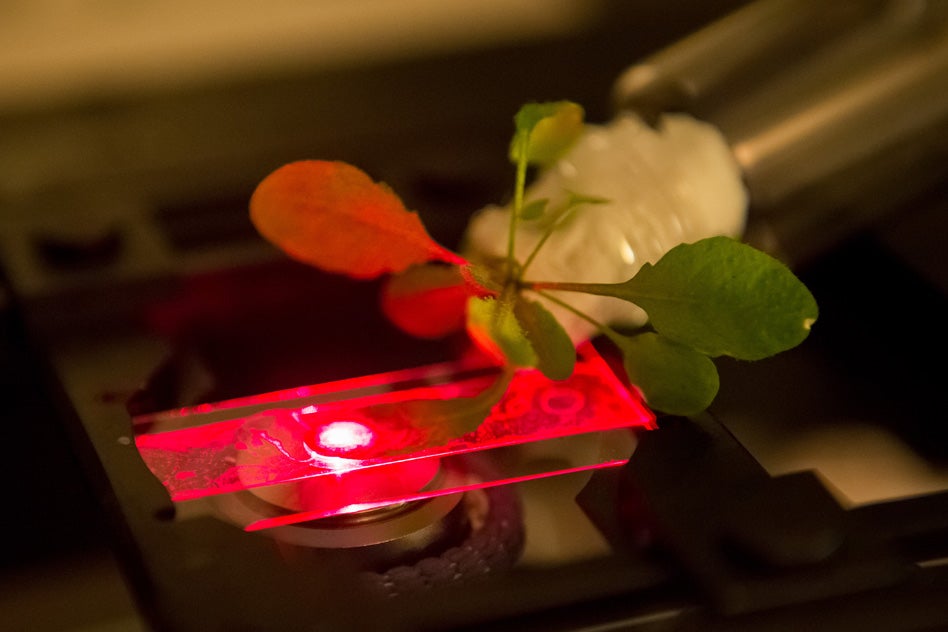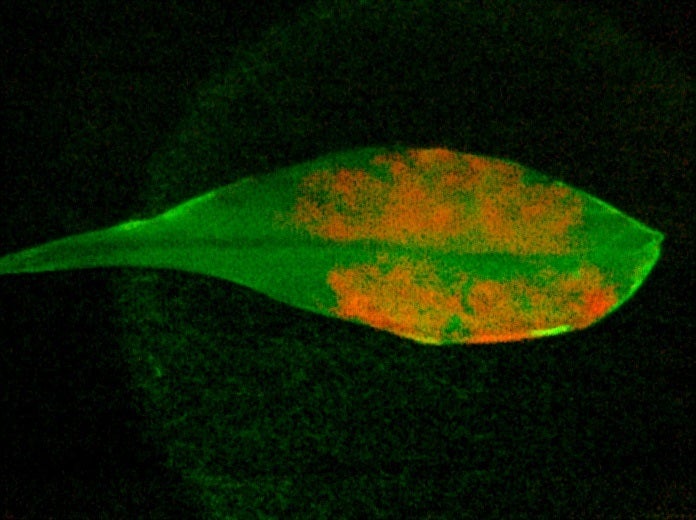Bionic plants 'watered' with carbon nanotubes turn into super-charged fauna
'Watering' plants with dilution of carbon nanotubes boosted photosynthesis by 30 per cent and create a living gas detector - scientists say this is just the start

Your support helps us to tell the story
From reproductive rights to climate change to Big Tech, The Independent is on the ground when the story is developing. Whether it's investigating the financials of Elon Musk's pro-Trump PAC or producing our latest documentary, 'The A Word', which shines a light on the American women fighting for reproductive rights, we know how important it is to parse out the facts from the messaging.
At such a critical moment in US history, we need reporters on the ground. Your donation allows us to keep sending journalists to speak to both sides of the story.
The Independent is trusted by Americans across the entire political spectrum. And unlike many other quality news outlets, we choose not to lock Americans out of our reporting and analysis with paywalls. We believe quality journalism should be available to everyone, paid for by those who can afford it.
Your support makes all the difference.Scientists in the US have created the world’s first bionic plants, infusing test subjects with carbon nanotubes on a cellular level to improve photosynthesis and add new functionality, even managing to turn one plant into a chemical detector.
The team of biochemists and chemical engineers from MIT announced their work in the journal Nature Materials earlier this week, dubbing the new field of research “plant nanobionics”. Researchers hinted that in future their work could add even more ‘exotic’ abilities to plants; from boosting mobile phone signals to acting as living streetlamps.
“Plants are very attractive as a technology platform,” says Michael Strano, a Professor of Chemical Engineering and leader of the research team. “They repair themselves, they’re environmentally stable outside, they survive in harsh environments, and they provide their own power source and water distribution.”
The team applied a dilution of carbon nanotubes directly to the underside of the leaves of an Arabidopsis thaliana (a popular ‘model organism’ in biology selected for its relatively small genome), which the plant sucked up via vascular infusion – the ‘breathing’ process by which plants absorb carbon dioxide and expel oxygen.
Through this naturally occurring mechanism the nanotubes found their way to the plant’s chloroplasts – the specialized cell that conducts photosynthesis, using chlorophyll to capture and store the energy from sunlight.

The scientists found that the plants that had been treated with the dilution in this way produced 30 per cent more energy than normal. The scientists predict that by altering the diameter of the nanotubes they could even capture wavelengths of light that plants currently can’t use, such as green light (plants are green because they reflect rather than absorb green light) and ultraviolet.
A second dilution of carbon nanotubes that had been treated to detect the gas nitric oxide (an environmental pollutant produced by combustion) was just as easily incorporated into the body of plants. Strano says that when the plant senses gas it emits “a near-infrared light signal, like in a TV remote control, that can be read by an external detector.”
Different varieties of nanotubes could be used to detect different gases, with the paper’s lead author, biologist Juan Pablo Giraldo, envisioning plants that operate as self-powered devices that work as detectors for explosives in airports.
The scientists have not yet had a chance to study the long-term effects of the nanotubes on the plants, but the preliminary results suggest the plants are just as healthy as before – and the boost to photosynthesis might even make them stronger. The team is also working on incorporating electronic nanomaterials such as grapheme into plants.
"Right now, almost no one is working in this emerging field," says Giraldo. "It's an opportunity for people from plant biology and the chemical engineering nanotechnology community to work together in an area that has a large potential."
Join our commenting forum
Join thought-provoking conversations, follow other Independent readers and see their replies
Comments